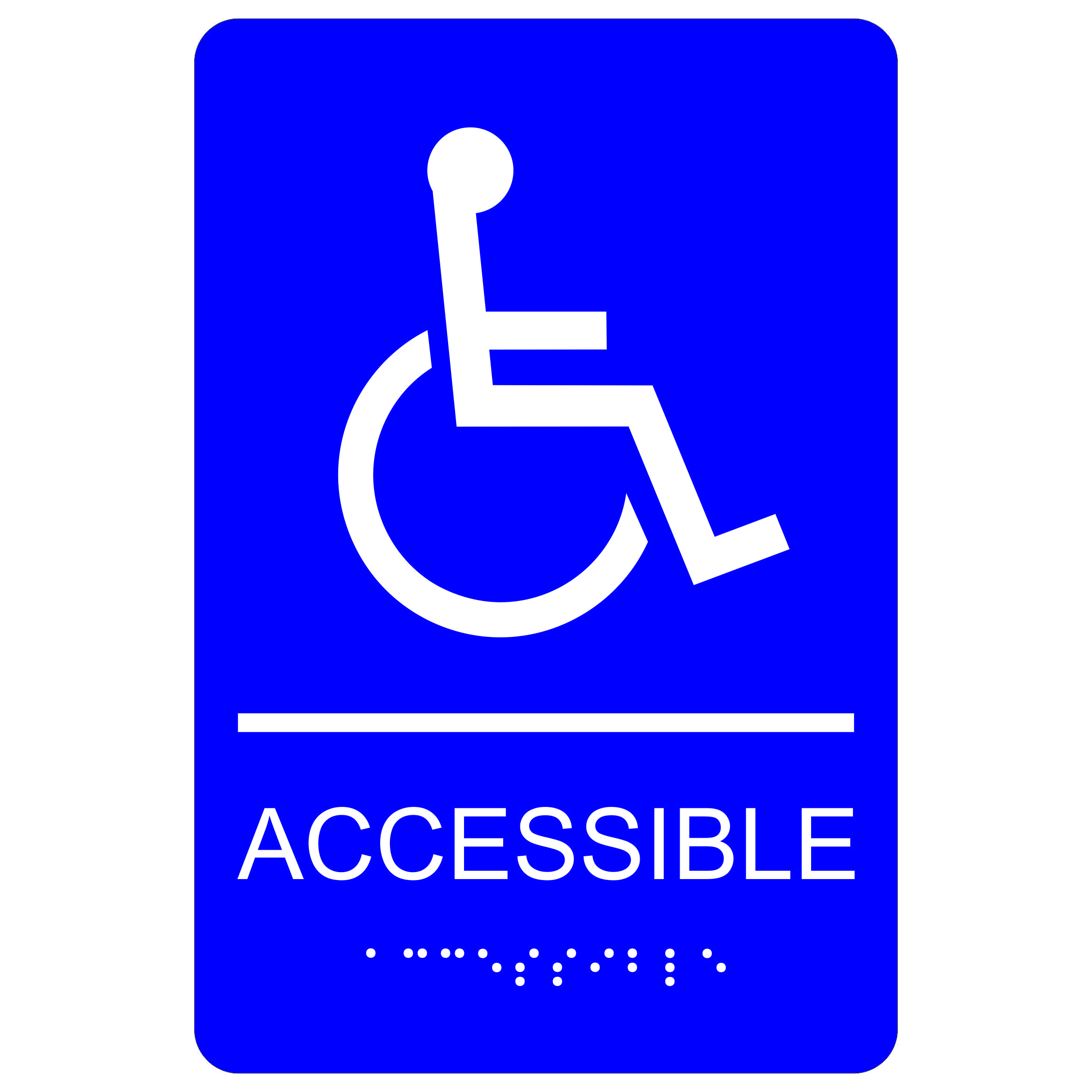The Impact of ADA Signs on Neighborhood Accessibility
The Impact of ADA Signs on Neighborhood Accessibility
Blog Article
Exploring the Trick Functions of ADA Indications for Enhanced Availability
In the realm of accessibility, ADA signs act as silent yet powerful allies, making sure that spaces are navigable and comprehensive for people with impairments. By incorporating Braille and responsive elements, these indicators damage barriers for the aesthetically impaired, while high-contrast color systems and understandable fonts accommodate varied visual needs. In addition, their strategic positioning is not approximate yet rather a calculated effort to assist in seamless navigating. Yet, past these features exists a deeper narrative regarding the evolution of inclusivity and the recurring dedication to producing equitable spaces. What a lot more could these signs indicate in our quest of universal availability?
Significance of ADA Compliance
Guaranteeing conformity with the Americans with Disabilities Act (ADA) is critical for promoting inclusivity and equal gain access to in public rooms and work environments. The ADA, passed in 1990, mandates that all public centers, companies, and transport services fit individuals with handicaps, guaranteeing they delight in the exact same rights and opportunities as others. Conformity with ADA standards not only meets legal commitments but also boosts an organization's track record by showing its commitment to variety and inclusivity.
One of the vital facets of ADA compliance is the implementation of obtainable signage. ADA indicators are designed to guarantee that people with impairments can quickly navigate via spaces and buildings.
In addition, sticking to ADA laws can minimize the danger of legal effects and possible penalties. Organizations that fall short to conform with ADA standards may encounter charges or suits, which can be both destructive and economically challenging to their public picture. Therefore, ADA compliance is important to fostering an equitable environment for everyone.
Braille and Tactile Components
The unification of Braille and responsive aspects right into ADA signage embodies the concepts of availability and inclusivity. It is usually put under the equivalent message on signage to ensure that people can access the info without visual assistance.
Responsive components prolong beyond Braille and consist of increased signs and personalities. These parts are designed to be noticeable by touch, permitting people to determine space numbers, restrooms, departures, and other crucial locations. The ADA establishes certain guidelines pertaining to the size, spacing, and positioning of these tactile components to optimize readability and guarantee uniformity throughout different settings.

High-Contrast Color Design
High-contrast color design play a crucial function in boosting the visibility and readability of ADA signage for people with aesthetic impairments. These systems are necessary as they make the most of the difference in light reflectance in between message and history, ensuring that indications are quickly noticeable, even from a range. The Americans with Disabilities Act (ADA) mandates using particular color contrasts to suit those with restricted vision, making it an important element of conformity.
The efficacy of high-contrast colors hinges on their capability to stand apart in different lighting conditions, including poorly lit atmospheres and areas with glow. Usually, dark message on a light background or light text on a dark background is used to attain ideal contrast. As an example, black message on a yellow or white background offers a raw aesthetic distinction that helps in quick recognition and comprehension.

Legible Fonts and Text Size
When taking into consideration the design of ADA signage, the option of understandable font styles and ideal text dimension can not be overemphasized. The Americans with Disabilities Act (ADA) mandates that fonts need to be not italic and sans-serif, oblique, manuscript, extremely decorative, or of unusual kind.
According to ADA standards, the minimum message elevation ought to be Your Domain Name 5/8 inch, and it should enhance proportionally with watching distance. Consistency in message dimension adds to a cohesive visual experience, helping individuals in browsing atmospheres efficiently.
Furthermore, spacing between lines and letters is indispensable to legibility. Adequate spacing protects against characters from look at here now appearing crowded, boosting readability. By adhering to these standards, developers can substantially boost access, making certain that signs offers its desired purpose for all people, despite their aesthetic capacities.
Reliable Positioning Techniques
Strategic positioning of ADA signs is crucial for taking full advantage of access and making sure conformity with legal requirements. ADA guidelines specify that signs need to be placed at an elevation between 48 to 60 inches from the ground to guarantee they are within the line of sight for both standing and seated individuals.
Additionally, indicators must be positioned nearby to the latch side of doors to enable very easy identification prior to entry. Consistency in indication positioning throughout a facility enhances predictability, decreasing complication and improving overall customer experience.

Verdict
ADA indicators play a crucial role in advertising ease of access by incorporating features that deal with the requirements of people with disabilities. These elements collectively cultivate an inclusive environment, underscoring the importance of ADA compliance in guaranteeing equal access for all.
In the realm of access, ADA signs serve as quiet yet powerful allies, guaranteeing that rooms are accessible and inclusive for individuals with impairments. The ADA, established in 1990, mandates that all public centers, employers, and transportation solutions fit people browse this site with handicaps, guaranteeing they delight in the very same civil liberties and chances as others. ADA Signs. ADA indicators are designed to make certain that people with disabilities can easily navigate through buildings and spaces. ADA standards specify that signs must be placed at an elevation in between 48 to 60 inches from the ground to guarantee they are within the line of sight for both standing and seated people.ADA signs play a vital role in advertising availability by integrating features that resolve the demands of individuals with disabilities
Report this page